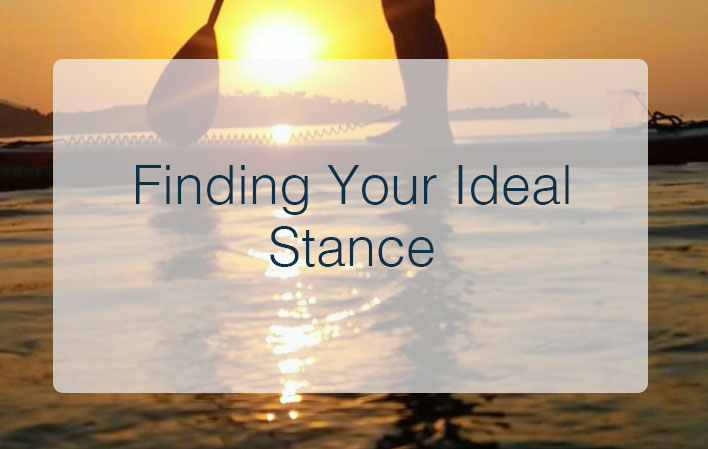Stand-up paddleboarding (SUP) has gained immense popularity for its blend of relaxation and exercise, allowing you to glide gracefully over serene waters while taking in the beauty of nature. Whether you’re a beginner or an experienced paddler, mastering your stance on the paddleboard is crucial for balance, stability, and overall enjoyment. In this article, we’ll explore where the best place to stand on a paddleboard is, taking into account different factors and preferences.
Stance Basics
Before delving into the specifics, it’s essential to understand the fundamental components of your paddleboarding stance:
- Feet Placement: Your feet should be parallel and hip-width apart, creating a stable foundation on the board.
- Weight Distribution: Keep your weight centered and balanced over the board. Avoid leaning too far forward or backward.
- Knee Bend: Slightly bend your knees to absorb shock and maintain stability.
- Core Engagement: Engage your core muscles to maintain an upright posture and assist with balance.
- Paddle Placement: Hold the paddle with one hand on the handle and the other on the shaft, ensuring your arms form a slight angle.
Finding Your Ideal Stance
I determined through my tests that the ideal stance on a paddleboard can vary depending on several factors, including your skill level, the type of paddling you’re doing, and the conditions of the water. Here’s a breakdown of different stances to consider:
Neutral Stance
- Description: This is the default stance for most paddling situations.
- Where to Stand: Centered on the board, with feet parallel and hip-width apart.
- Ideal for: Calm and flat water, recreational paddling, beginners, and maintaining balance.
Surf Stance
- Description: A staggered stance that’s slightly more forward-facing.
- Where to Stand: One foot forward and the other foot back, with knees bent.
- Ideal for: Riding waves, surfing on a paddleboard, and maneuvering in choppy water.
Racing Stance
- Description: An aggressive forward-facing stance for maximum speed.
- Where to Stand: Forward on the board, with feet closer together and knees slightly bent.
- Ideal for: Competitive paddleboarding, racing, and long-distance paddling.
Yoga Stance
- Description: A centered and stable stance for yoga or fitness paddling.
- Where to Stand: Centered on the board, with feet parallel and hip-width apart.
- Ideal for: Paddleboard yoga, fitness routines, and balance exercises on the balance board.
Choppy Water Stance
- Description: A more forward-leaning stance to handle rough water.
- Where to Stand: Slightly forward on the board, with knees bent and weight on the balls of your feet.
- Ideal for: Windy or choppy conditions, maintaining control in turbulent water.
SUP Stances Comparison Table
Here’s a comparison table of different stances for paddleboarding, highlighting their key features and when they are most suitable:
| Stance | Description | Where to Use | Key Features |
|---|---|---|---|
| Neutral Stance | Feet parallel, hip-width apart, centered on the board. | Calm and flat water, recreational paddling, beginners, maintaining balance. | Balanced and stable, suitable for most conditions. |
| Surf Stance | One foot forward, the other foot back, slightly forward-facing. | Riding waves, surfing on a paddleboard, maneuvering in choppy water. | Provides a more aggressive and surf-ready posture. |
| Racing Stance | Forward on the board, feet closer together, knees slightly bent. | Competitive paddleboarding, racing, and long-distance paddling. | Optimized for speed and efficient forward motion. |
| Yoga Stance | Centered on the board, feet parallel, hip-width apart. | Paddleboard yoga, fitness routines, balance exercises. | Provides stability for various yoga poses and exercises. |
| Choppy Water Stance | Slightly forward on the board, knees bent, weight on the balls of your feet. | Windy or choppy conditions, maintaining control in turbulent water. | Allows better control and balance in rough waters. |
Remember that the choice of stance should align with your paddleboarding goals, experience level, and the specific conditions of the water. Beginners often start with a neutral stance for stability, while experienced paddlers may adapt their stance based on the activity and environment.
Factors to Consider
Through my trial and error, I discovered several other factors can influence where you should stand on your paddleboard:
- Paddle Type: The length and blade size of your paddle can affect your stance. Adjust your stance to accommodate your paddle’s specifications for efficient paddling.
- Water Conditions: Calm, flat water requires a different stance than choppy or wavy conditions. Adapt your stance to suit the water’s behavior.
- Purpose: Are you paddleboarding for leisure, fitness, or competition? Your purpose can dictate your stance. For example, racing demands a more forward-leaning stance for speed, while yoga requires a stable, centered position.
- Board Design: The design of your paddleboard, including its length, width, and shape, can influence your stance. A wider board may provide more stability, while a narrower one might require better balance.
- Experience Level: Beginners often benefit from a more centered and stable stance, while advanced paddlers can experiment with more dynamic stances for specific activities.
Conclusion
The best place to stand on a paddleboard isn’t a one-size-fits-all answer. It depends on your skill level, the type of paddling you’re doing, and the conditions of the water. Experiment with different stances to find what works best for you and your paddling goals. Remember that practice and experience play a significant role in finding your ideal stance, so don’t be afraid to adapt and refine your technique as you continue your paddleboarding journey. Ultimately, the perfect stance is the one that keeps you balanced, comfortable, and enjoying every moment on the water.
Thesandshore.com is a source where the post Finding Your Best Stance: How and Where to Stand on a Paddleboard appeared first.


